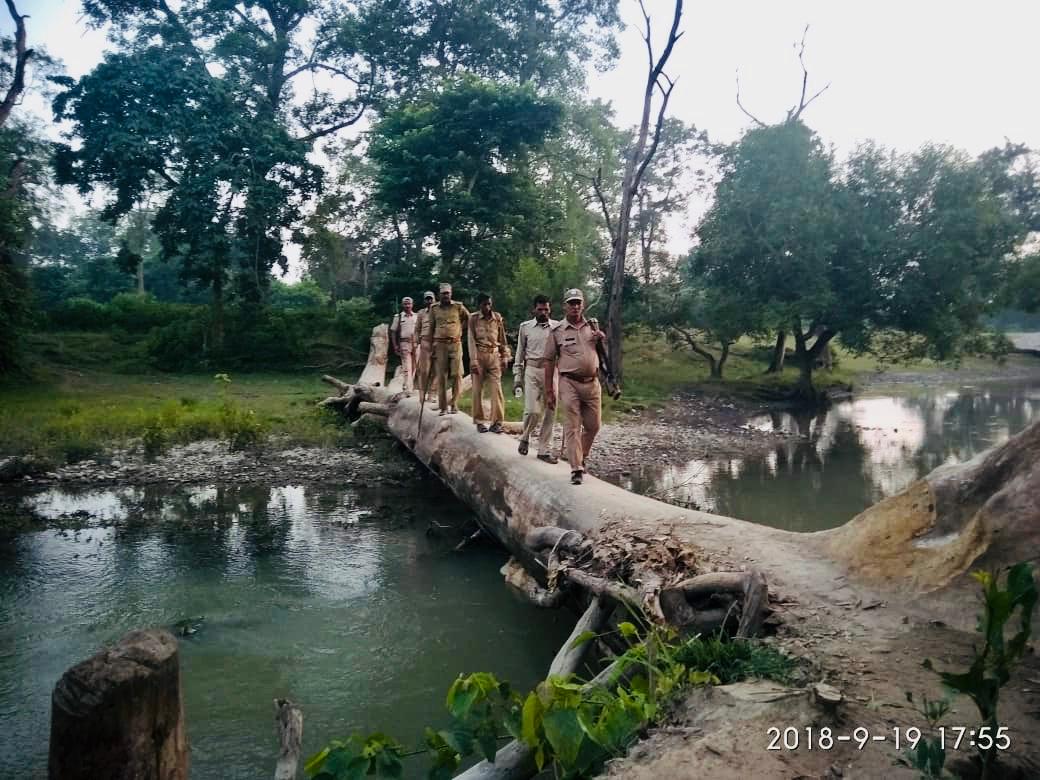In a bid to protect wildlife from poachers in India and around the world, researchers at the Indian Institute of Technology, Madras, and Harvard University have developed a novel machine learning (ML) algorithm called ‘CombSGPO’ (Combined Security Game Policy Optimization).
This ML algorithm was developed following a study led by Professor Balaraman Ravindran from the Department of Computer Science and Engineering at IIT Madras, who is also the head of the institute’s Robert Bosch Centre for Data Science and Artificial Intelligence, in collaboration with Professor Milind Tambe’s Research Group– Teamcore– at Harvard University. (Above image courtesy Facebook/Akhtamar Tour)
In their peer-reviewed paper they co-authored titled, ‘Reinforcement Learning for Unified Allocation and Patrolling in Signaling Games with Uncertainty’, the authors note, “CombSGPO depends on knowledge of an underlying animal density and on assumptions of certain knowledge by poachers, such as the poacher knowing an initial allocation in the patrolling stage. If a poacher knew the defender’s location at all times, he may be able to evade the rangers, and a better strategy for the defender may be to simply protect high-value(d) targets.”
They go on to add, “We also assume that poachers know that signalling implies rangers are responding to prevent poaching from occurring. In the real world, it is possible that poachers would not know this is the case and may fear worse, such as the drone being armed. There may also be adverse effects of signalling on animals. Any deployment must therefore be done with transparency and collaboration with local stakeholders, especially in traditionally marginalized communities. Depending on this local context, other interventions may be better, or maybe used together with strategic signalling and CombSGPO.”
Researchers found that combined and coordinated use of forest rangers and drones was a good way to protect wildlife from poaching. As the resources (Rangers and drones) are limited, the researchers developed this algorithm which provides a good strategy to protect wildlife with the resources available. “This new algorithm provides highly efficient strategies that are more scalable than the earlier ones created for the same purpose,” the authors claim.
Highlighting the need for such Research, Professor Balaraman Ravindran, said, “The work was motivated by the need to perform strategic resource allocation and patrolling in green security domains to prevent illegal activities such as wildlife poaching, illegal logging and illegal fishing. The resources we consider are human patrollers (forest rangers) and surveillance drones, which have object detectors mounted on them for animals and poachers and can perform strategic signalling and communicate with each other as well as the human patrollers.”
This developed algorithm utilizes a game theory-based model created by the researchers. To the uninitiated, according to Investopedia, “Game theory is a theoretical framework for conceiving social situations among competing players.” In the context of wildlife protection, game theory helps predict the areas where poaching may take place. These predictions are based on the earlier poaching incidents and the interaction between poachers and defenders.

Elaborating on this Project, Aravind Venugopal, first author of the study, and a Post-Baccalaureate Fellow, RBCDSAI, IIT Madras, said, “The game model and the kind of resources we use to simulate such a ‘poaching game’ between the defender (Forest Rangers and drones) and attackers (poachers) are based on the widely-studied ‘Stackelberg Security Game Model’ and are linked to drones that have already been deployed by Air Shepherd (a foundation that deploys drones to stop elephant and rhino poaching in Africa).”
Researchers tested this algorithm in a computer simulation with a behavioural model for the poachers that led each poacher to move towards areas where there is a high probability of finding animals but also move away from the defender agents (drones and rangers).
“We are currently working towards additional steps required for eventual real-world deployment such as improving sample efficiency. This algorithm has not been used in India for the time being. However, we would like to eventually see it being used in the real world for combating poaching,” says Aravind, in a conversation with The Better India.
Elaborating on the potential impact of such an algorithm, he adds, “Forest rangers often have to patrol huge areas of forest with limited resources. Currently, surveillance drones exist that can also perform object detection for activities such as detecting humans, animals etc. in forests. Our algorithm combines drones and rangers and trains this team to perform strategic resource allocation, patrolling and communication. We think that this will lead to more efficient and effective strategies for combating poaching.”
As per the World Wide Fund for Nature (WWF), the wildlife trade poses the second-biggest direct threat to the survival of species after habitat destruction. While several organizations and regulatory authorities are trying to curb the incidences of poaching, the poachers seem to have always remained one step ahead of the patrollers.
To extend this research for application in domains such as security, search and rescue and aerial mapping for agriculture among others, the team is trying to perform sample-efficient multi-agent reinforcement learning to learn with the least amount of data since data collection is costly in a real-world scenario.
(Edited by Vinayak Hegde)
Like this story? Or have something to share? Write to us: contact@thebetterindia.com, or connect with us on Facebook and Twitter.
If you found our stories insightful, informative, or even just enjoyable, we invite you to consider making a voluntary payment to support the work we do at The Better India. Your contribution helps us continue producing quality content that educates, inspires, and drives positive change.
Choose one of the payment options below for your contribution-
By paying for the stories you value, you directly contribute to sustaining our efforts focused on making a difference in the world. Together, let's ensure that impactful stories continue to be told and shared, enriching lives and communities alike.
Thank you for your support. Here are some frequently asked questions you might find helpful to know why you are contributing?

